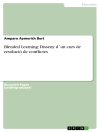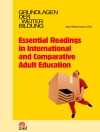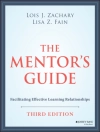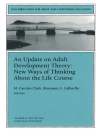This book provides an overview of science education policies, research and practices in mainland China, with specific examples of the most recent developments in these areas. It presents an insiders’ report on the status of Chinese science education written primarily by native speakers with first-hand experiences inside the country. In addition, the book features multiple sectional commentaries by experts in the field that further connect these stories to the existing science education literature outside of China.
This book informs the international community about the current status of Chinese science education reforms. It helps readers understand one of the largest science education systems in the world, which includes, according to the Programme for International Student Assessment, the best-performing economy in the world in science, math and reading: Shanghai, China.
Readers gain insight into how science education in the rest of China compares to thatin Shanghai; the ways Chinese science educators, teachers and students achieve what has been accomplished; what Chinese students and teachers actually do inside their classrooms; what educational policies have been helpful in promoting student learning; what lessons can be shared within the international science education community; and much more.
This book appeals to science education researchers, comparative education researchers, science educators, graduate students, state science education leaders and officers in the international communities. It also helps Chinese students and faculty of science education discover effective ways to share their science education stories with the rest of the world.
Innehållsförteckning
ACKNOWLEDGMENTS.- SERIES FOREWORD, Dana Zeidler.- PREFACE.- INTRODUCTION: CHINESE SCIENCE EDUCATION IN A GLOBAL CONTEXT.- PART I. SCIENCE EDUCATION REFORM POLICIES.- Editor’s Introduction: Part I.- Chapter 1. Status of Chinese Science Education Reforms: Policies and Development Framework, Hongshia Zhang & Dongshen Wan.- PART II. SCIENCE CURRICULUM AND INSTRUCTION.- Editor’s Introduction: Part II.- Chapter 2. An Overview of Early Childhood Science Education in China, Xiaoyi Gao & Baohui Zhang.- Chapter 3. Elementary Science Education Reform in Guangzhou: Expectations and Changes, Lingbiao Gao, Cuidian Feng, Maorong Zhan, & Xueping Zheng.- Chapter 4. Science Teaching Practices in Junior Secondary Schools, Hongjia Ma, Gavin W. Fulmer & Ling L. Liang.- Chapter 5. Science Curriculum and implementation in Senior Secondary School, Xiao Huang, Lin Ding & Bingyuan Hu.- Chapter 6. Examining the Senior Secondary School Chemistry Curriculum in China in View of Scientific Literacy, Bing Wei & Bo Chen.- PART III. SOCIO-CULTURAL ASPECTS IN SCIENCE EDUCATION.- Editor’s Introduction: Part III.- Chapter 7:Challenges and Opportunities for Environmental Education Towards Education for Sustainable Development in Chinese Communities, Irene Nga-yee Cheng & Winnie Wing-mui So.- Chapter 8. Hong Kong Students’ Decision Making about Ecological and Health Issues, Y. C. Lee.- PART IV. ASSESSMENT.- Editor’s Introduction: Part IV.- Chapter 9. Assessing Science Learning in Schools: Current Policy and Practices, Cuidian Feng & Lingbiao Gao.- Chapter 10. Alignment between the National Science Curriculum Standards and Standardized Exams at Secondary School Gateways, Xian Chen, Min Y. Jiang, Li Cai, Ling L. Liang, Jin Du, Yan Zhou.- Chapter 11.Relationship between Science Teachers’ Conceptions of Assessment of Students’ Academic Performance and Their Instructional Approaches, Weining Wu.- PART V. SCIENCE LEARNING IN INFORMAL SETTINGS.- Editor’s Introduction: Part V.- Chapter 12. An Examination of National Policy on Youth Science Learning in Informal Education Settings and Its Implementation in China, Huiliang Zhang & Shunke Shi.-Chapter 13. An Overview of Research on Informal Science Learning among China’s Youth, Fujun Ren & Jingying Wang.- Chapter 14. Effects of Media on Science Learning of Chinese Youths: A Synthesis of Literature and a Case Study, Ling Chen, Yan Yan & Jie Yuan.- Chapter 15. A Case Study of a Science Teacher in a Science Club Teaching Scientific Inquiry, Xiu-Ju Li.- Chapter 16.Students’ Views of Science Learning During Visits to Science Museums: A Case Study, Lihui Wang.- PART VI. SCIENCE TEACHER EDUCATION.- Editor’s Introduction: Part VI.- Chapter 17. An Overview of Professional Preparation for Pre-Service and In-Service Science Teachers, Cheng Liu & Enshan Liu.- Chapter 18. Enhancing Science Teacher Professional Development: Lessons from a Study of Misconceptions of Junior Secondary Biology Teachers, Enshan Liu & Mingyu Li.- Chapter 19. Video Case Instruction: A New Approach to Instructional Design and Practice for Pre-Service Chemistry Teachers, Zhen Lu & Lyna Kwan.- EPILOGUE.












